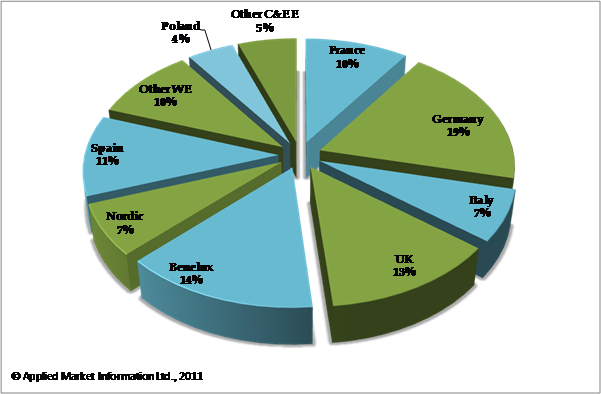
Lighter plastic bags taking market share from paper in Europe
By Canadian Packaging Staff
General Applied Market Information bulk containers LDPE LLDPE paper sacks Plastics sacksPlastic heavy duty sacks are making inroads in cement, pet food and food ingredients segments.
Leading plastics industry consultants Applied Market Information Ltd. (AMI) have recently revealed the increasingly important role plastics play in industrial packaging in its new detailed report on the European market for plastic heavy duty sacks.
According to AMI, plastic sacks now account for over half of all sacks used in industrial packaging in Europe and are set to make significant inroads into markets which up to now have mainly used paper such as cement, pet food and food ingredients.
The industry has been undergoing a period of significant change driven by an increased competitive dynamic at the customer level, new developments in resin technology and restructuring of European supply. Along with opportunities, challenges arise for the plastic sack manufacturers who strive to keep and expand their market share.
Total demand for plastic heavy duty sacks in Europe during 2011 was estimated at just over 5,200 million units or just under 600,000 tonnes. In unit terms, plastic sacks now account for over half of all sacks used in Europe. While share is forecast to continue growing market growth has been slowing due to:
- relative maturity of the market;
- increasing use of big bags, flexible intermediate bulk containers (FIBC) and bulk deliveries due to consolidation within the sectors downstream in the industry;
- ongoing downgauging trends where still feasible.
The most significant growth has been, and continues to be, in the form, fill and seal sector (FFS), which now represents 70 per cent of plastic heavy duty sack usage, followed by a 24 per cent share held by open mouth sacks and six per cent share held by valve sacks. The share of FFS material is expected to increase in future thanks to the processing and economic benefits it offers, while valve sacks at some point may all but disappear from the market. Open mouth sacks are likely to maintain a relatively stable market share.
The largest end use applications for plastic heavy duty sacks are chemicals and fertilizers and horticultural products accounting for just over 30 per cent and 20 per cent of the market respectively. Although these will continue driving the market in volume terms, the end uses with the fastest growing potential are now applications which have been the traditional strongholds of paper sacks including cementitious products and food ingredients (such as flour, milk powder or sugar). These have already seen some shift from paper sacks to plastic and thanks to developments in technology, special closure sack systems and advanced film formulations this trend is forecast to be much more profound in the next five years.
The markets are mainly in Germany, Benelux (a customs union in Europe comprising the three neighboring countries of Belgium, the Netherlands and Luxembourg) and the United Kingdom which take the lead in plastic industrial sack consumption and together account for almost a half of the total European market. While the West European countries will drive the consumption of sacks in tonnage terms, in fact it is Central and Eastern Europe which will have the fastest recorded annual growth rates over the next five years, where penetration levels are much lower.
Low-density polyethylene (LDPE) was traditionally the major resin used in the production of heavy duty sacks, however, its use is now in decline, while linear low-density polyethylene (LLDPE), especially the C6 and C8 grades and metallocene resins have been increasing owing to the enhanced performance that these resin grades offer.
Thanks to much research and development in resin and technology but also the need for cost cutting and rationalization during the years of the economic crisis between 2008 and 2010, the average thickness of plastic heavy duty sacks has been reduced by around five per cent between 2009 and 2011. Although it is increasingly difficult to further downgauge film used for sacks the industry will continue to strive for more advanced technologies e.g. pre-stretching (such as MDO – machine direction orientation) and ever improving film formulations to allow the use of as little plastic as possible so that heavy duty sacks becomes lighter, thinner and therefore more environmentally friendly.
The plastic heavy duty sack market in Europe is a detailed multi-client report. For more information contact Karla Vittova via telephone: +44 117 924 9442, via e-mail: via e-mail at kv@amiplastics.com. You can also visit the AMI website at www.amiplastics.com.
Advertisement


